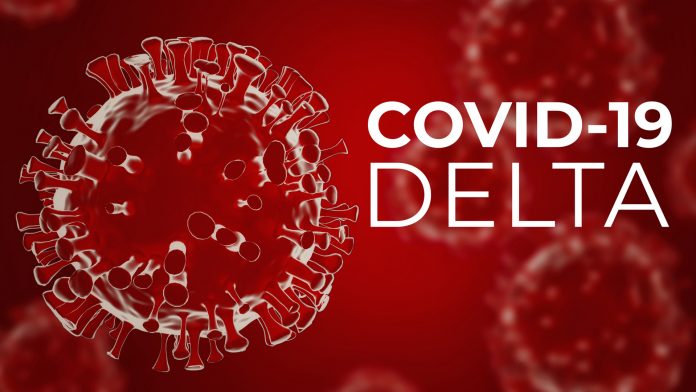
Research emerging from the United States has revealed what makes the dreaded COVID-19 Delta Variant so infectious, a breakthrough that may help to design new measures for combatting future strains.
In a study conducted at the Boston Children’s Hospital, researchers have identified what makes the COVID-19 Delta Variant – a strain of SARS-CoV-2 that, in recent months, has rapidly become the most dominant strain worldwide – spread so quickly. The findings signify that a more targeted approach will be optimal for developing future COVID-19 vaccines and treatments.
In a previous investigation, the leader of this study, Bing Chen, discovered that a range of earlier SARS-CoV-2 variants, such as Alpha, Beta, and G614, increased their potency by acquiring a genetic change that stabilised its spike protein – the surface protein on which current vaccines are based.
This mutation led to the variants having an increased ability to penetrate cells; now, the Boston Children’s Hospital team has unearthed what makes the COVID-19 Delta Variant the most infectious to date.
Chen said: “We thought there must be something very different happening because Delta stands out among all the variants. We found a property that we think accounts for its transmissibility and so far, appears to be unique to Delta.”
Influence on ACE2
SARS-CoV-2 infects our cells through its spikes binding to a receptor called ACE2; the spikes then transform their shape, folding in on themselves and fusing the virus’ outer membrane with the membranes of our cells.
To examine how proficient the spike protein of the COVID-19 Delta Variant is at membrane fusion, the team employed two types of cell-based assays. Here, the team observed that a simulated Delta virus infected human cells more efficiently and quickly than the other five COVID-19 variants, especially when the cells had low amounts of ACE2.
“Membrane fusion requires a lot of energy and needs a catalyst,” explained Chen. “Among the different variants, Delta stood out in its ability to catalyse membrane fusion. This explains why Delta is transmitted much faster, why you can get it after a shorter exposure, and why it can infect more cells and produce such high viral loads in the body.”
Examining the COVID-19 Delta Variant
Next, the team employed cryo-electron microscopy – which has resolution down to the atomic level – to analyse how mutations in the variants impact the spike protein’s structure. The researchers imaged spike proteins from the Delta, Kappa, and Gamma variants, comparing them to spikes from previously characterised G614, Alpha, and Beta variants.
The test illuminated that all variants had changes in two crucial parts of the spike protein that are recognised by our immune systems’ neutralising antibodies – the receptor-binding domain (RBD), which binds to ACE2, and the N-terminal domain (NTD). Mutations of either domain can cause neutralising antibodies to be less able to bind to the spike.
Chen said: “The first thing we noticed about the COVID-19 Delta variant was that there was a large change in the NTD, which is responsible for its resistance to neutralising antibodies. The RBD also changed, but this led to little change in antibody resistance. Delta still remained sensitive to all the RBD-targeted antibodies that we tested.”
When analysing other variants, the team ascertained that they all modified the NTD in different ways that altered its contours, whereas the mutations in the RBD were noticeable but more limited. The structure of the RBD was relatively stable across all variants, making it likely to preserve its role in binding to the ace2 receptor. The team believe that due to this, RBD is a favourable target for future vaccines and antibody treatments.
“We wouldn’t want to target the NTD because the virus can quickly mutate and change its structure; it’s a moving target,” concluded Chen. “It might be most effective to target the RBD — to focus the immune system on that critical domain rather than the whole spike protein.”










